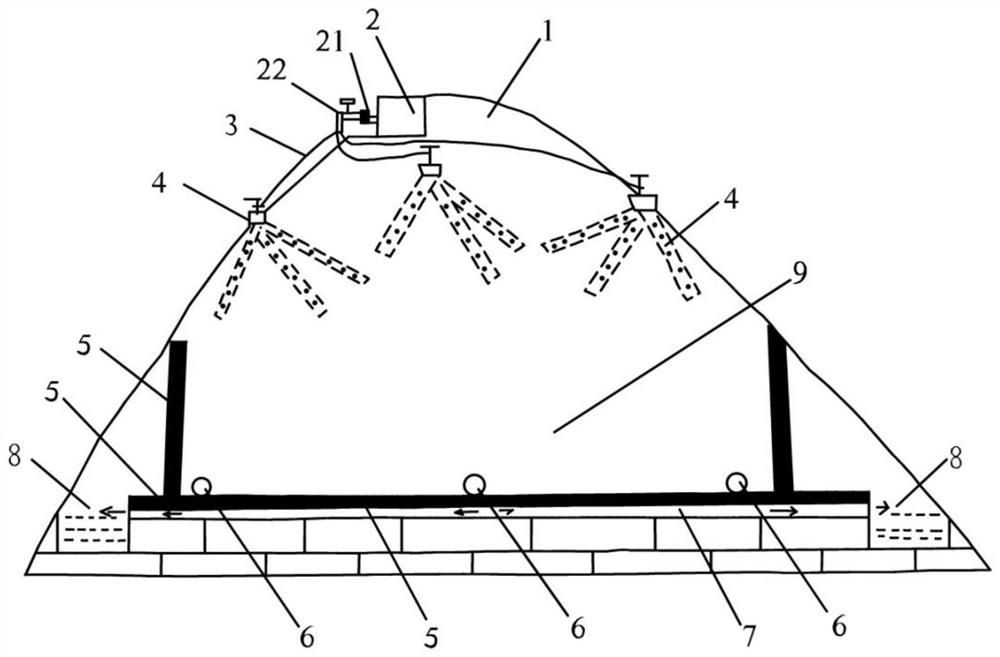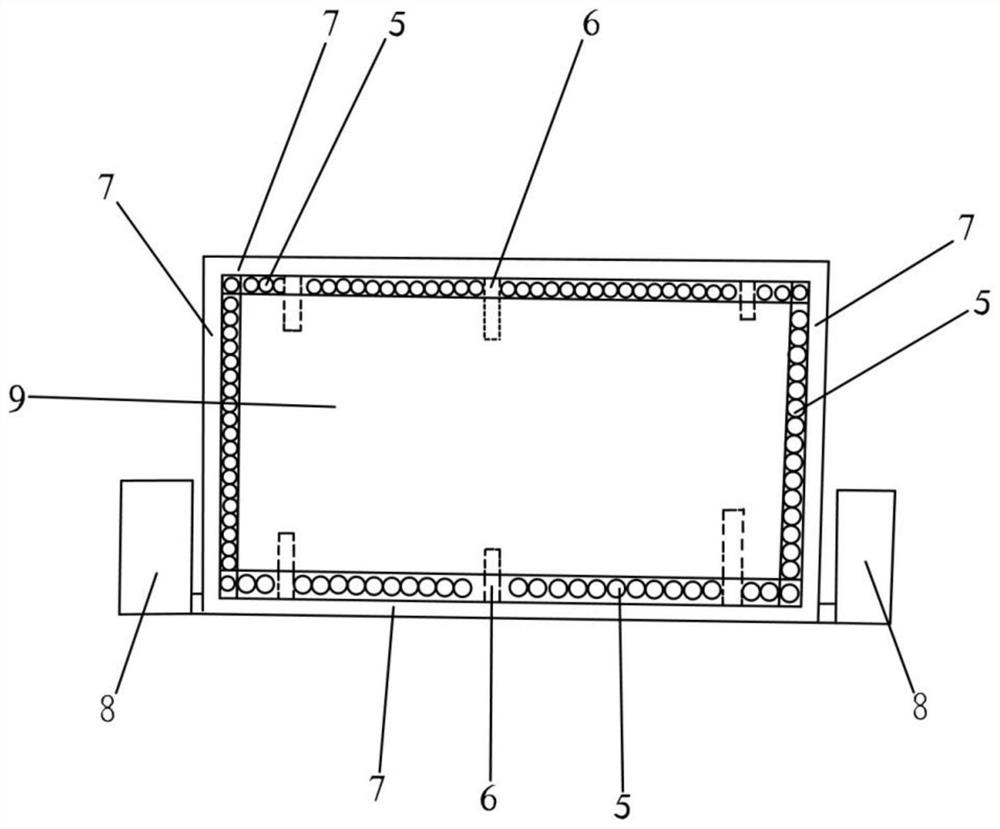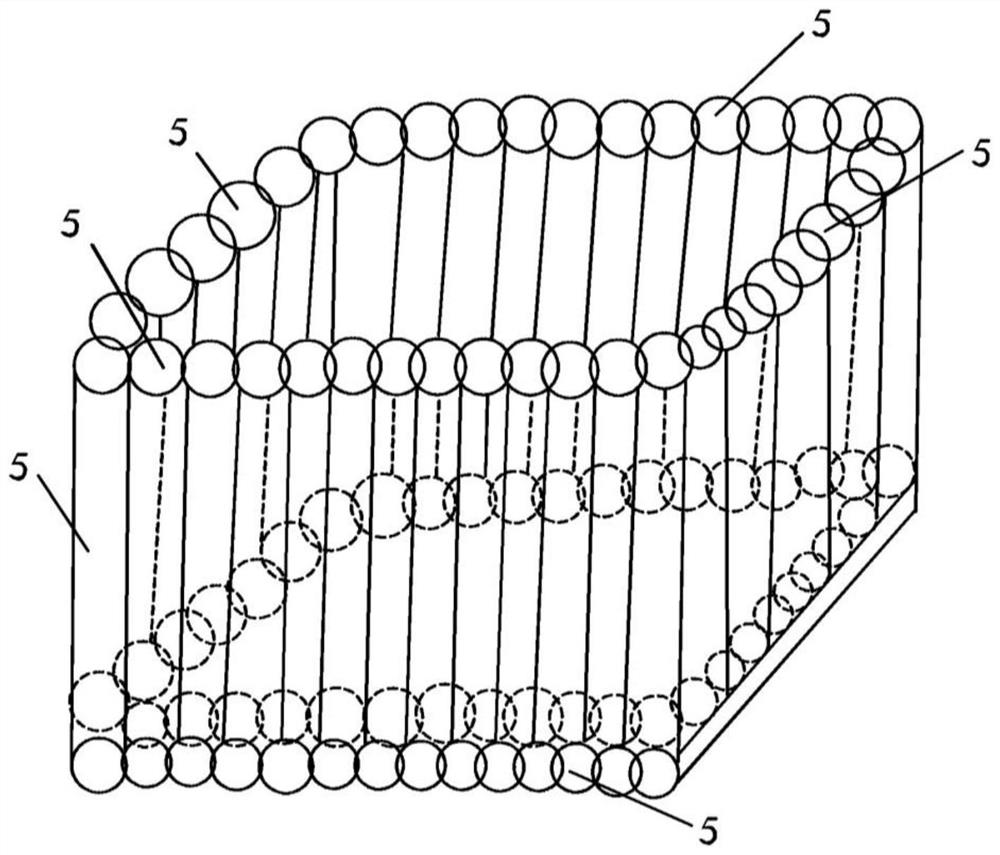[0009] (2) The leakage of ore leaching solution is large, and there are blind spots in ore leaching; the use of sites is limited, which affects the efficiency of ore leaching
If the rare earth mine does not have a complete
bedrock floor or the
bedrock floor is buried too deep, the use of in-situ leaching technology is limited or unavailable. If the
pool leaching process or
heap leaching process is used, it will cause environmental damage and is not allowed to be used at present.
Pool leaching or
heap leaching process, so this type of southern
ion-type rare earth ores cannot be mined, making the precious
ion-type resources unable to be developed and utilized
[0011] Judging from decades of in-situ leaching mine mining practice, no matter whether the rare earth mine has a complete
bedrock floor or not, there is always the problem of leaching liquid leakage. Go underground or be taken out by mining "top water" or rainwater leaching, resulting in waste of leaching solution
[0012] During the leaching process, in order to fully extract the rare earth ore, it is generally necessary to increase the
liquid injection volume and continuously inject the liquid, but if the
liquid injection volume is too large, it will easily cause landslides, and if the
liquid injection volume is insufficient, it is inevitable that a large amount of leaching liquid cannot reach the leaching site Blind area of the mine, so some rare earth ores cannot be leached, resulting in a waste of precious rare earth resources
[0013] (3) Manually excavated liquid injection wells are prone to leaching blind spots, reducing leaching efficiency
[0014] The current leaching shafts are shallow vertical shafts excavated manually with Luoyang shovels. Although the liquid injection wells are densely distributed on the mine when the rare earth mines are mined, the distance between them is generally 1.5 meters to 3 meters, but the liquid injection wells are arranged vertically. Therefore, it is difficult for the leaching solution to penetrate into all rare earth-containing ore bodies in the mine, which reduces the leaching efficiency and forms leaching blind spots. The rare earth ore cannot be leached, and it is a waste of rare earth resources.
[0015] (4) Manual excavation of the liquid collection roadway or drilling to install the liquid collection pipe, the liquid collection is not complete
[0016] The rare earth ore is collected by manual excavation of the liquid collection roadway. Due to the sealing problem of the cracks in the rare earth mine rock ore body and the bottom plate, there is a problem that the ore liquid leaks out of the mine.
[0017] The rare earth ore is collected by drilling and installing a liquid collection pipe, and some liquid collection pipes are filled with filter materials. Regardless of whether the liquid collection pipe is filled with filter materials, there is a problem that the liquid collection pipe is blocked by fine-grained soil in the middle and later stages of leaching. Reduce the liquid collection speed of the liquid collection pipe or even completely block the liquid collection pipe, affecting the liquid collection efficiency, causing the rare earth ore liquid to flow out of the mine through the seepage channel, resulting in waste of resources and environmental
pollution.
[0018] (5) The artificially excavated liquid
injection well becomes a rainwater channel, which is easy to cause landslides in rare earth mines
[0019] In situ leaching, it is necessary to manually excavate a large number of liquid injection wells with a
diameter of 0.3 meters to 0.5 meters with Luoyang shovels. The liquid injection wells are not only channels for liquid injection, but also channels for rainwater. A large amount of leaching liquid and rainwater pass through the injection wells The long-term immersion and
erosion of the ore body by the injection of the underground ore layer and the leaching solution, while the original rock of the
ion-type rare earth ore is mainly ore-bearing granite, the shape of the original ore is soil-like, and the strength is low. The state of rock-
soil stress balance causes damage, which has a great
impact on the
slope stability and the physical and mechanical properties of the soil. If the ore body leaching period is long, the rainwater and leaching liquid infiltrated from the liquid
injection well will make the ore body heavier and increase to The downward sliding force causes cracks of different sizes to appear on the hillside, and even causes the collapse of the
injection well or induces a
landslide, seriously affecting the economic and environmental benefits of the in-situ leaching process for extracting rare earths
[0020] (6) The construction efficiency of manual excavation of liquid injection wells is low, the cost of manual excavation of liquid collection roadways is high, and there are potential safety hazards
Manual excavation of the liquid collection roadway has a long construction period, high cost, and discharges a lot of
muck, and there are safety hazards such as roadway collapse
 Login to View More
Login to View More  Login to View More
Login to View More 


